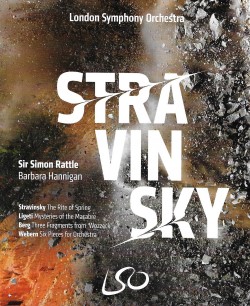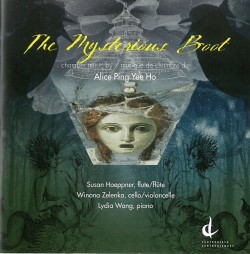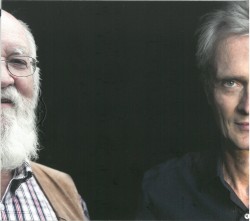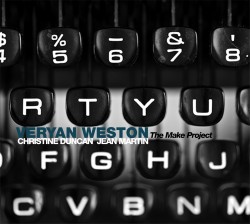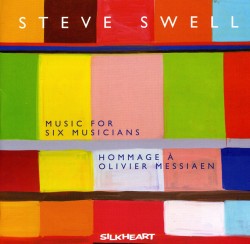Wind Concertos: Ticheli; Warnaar; Ranjbaran - James Zimmermann; Leslie Norton; Érik Gratton; Nashville Symphony; Giancarlo Guerrero
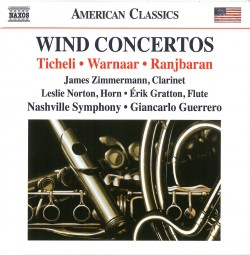 Wind Concertos: Ticheli; Warnaar; Ranjbaran
Wind Concertos: Ticheli; Warnaar; Ranjbaran
James Zimmermann; Leslie Norton; Érik Gratton; Nashville Symphony; Giancarlo Guerrero
Naxos 8.559818 (naxos.com)
Three very different, recent (2010-2015), ear-catching concertos in the traditional fast-slow-fast three movements, by three composers born in the 1950s, each referencing earlier music, receive vibrant performances from Nashville Symphony principals James Zimmermann (clarinet), Leslie Norton (horn) and Érik Gratton (flute).
In his Clarinet Concerto, Frank Ticheli, who teaches at the University of Southern California, pays homage to American composers in movements titled Rhapsody for George, Song for Aaron and Riffs for Lenny, adding some recognizable quotations and paraphrases to flavour his original, engaging takes on his illustrious predecessors. It’s a pops concert natural!
Michigan native Brad Warnaar wrote his Horn Concerto for the instrument he played in the Toronto Symphony and other Ontario orchestras in the 1970s, before relocating to play in the Los Angeles Philharmonic and, he claims, “over a thousand film scores.” Warnaar says his concerto embraces everything from rock to atonality, but I hear only very accessible, enjoyable, tonal mainstream music in the minimalist-energized Tintinnabulations, the ruminative Elegies, Lamentations and the jaunty Tarantella, including subtle quotations from Mozart, Brahms and Richard Strauss.
Juilliard faculty member Behzad Ranjbaran, born and raised in Iran, emulates what he calls the “mystic, melancholic” tone of the ney (Persian end-blown reed flute), enhancing the exoticism of his hybrid Iranian-Western Flute Concerto. Extended meditative passages (the Adagio cantabile is a real beauty) are offset by the sparkling finale.
These world-premiere recordings should help all three very entertaining concertos become, deservedly, part of today’s active repertoire.


